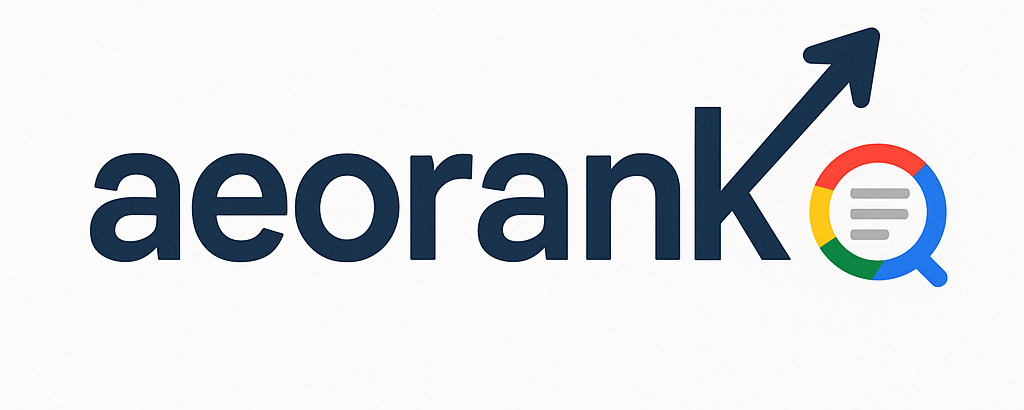Search isn’t what it used to be. Remember when jamming a few keywords into your blog could rocket you to page one? Yeah, those days are done. Now we’re living in a world of AI Overviews, zero-click searches, and conversational queries that sound more like you’re texting a friend than typing into Google. And this shift? It’s where AEO (Answer Engine Optimization) crashes head-on into traditional SEO.
But hang on—does that mean SEO is dead? Not even close. Let’s break this down.
SEO: Still Got Some Bite
SEO (Search Engine Optimization) is the old reliable. It’s about tweaking your site, content, and technical foundation to rank higher on search engines. Think:
- Keyword research
- Link-building
- Meta tags
- Page speed
- Mobile optimization
Basically, it’s the toolkit that helps you get noticed. And honestly? It still works.
Sites that rank well still lean hard on technical SEO. And if your pages take forever to load, or your content is a mess, don’t expect Google to show you any love. So yeah, traditional SEO isn’t obsolete—but it’s not the only game anymore.
Here’s the kicker: SEO assumes people are going to click your link. But with Google’s AI Overview giving people answers right on the results page, fewer people actually do.
That’s where AEO comes in.
AEO: Your Ticket to AI Search Survival
AEO (Answer Engine Optimization) is built for how people search now. Especially with Google SGE (Search Generative Experience) becoming the norm. People don’t want links. They want answers. Fast. Clear. Contextual.
AEO is about structuring your content in a way that Google can scrape, understand, and use right inside its AI Overview box.
So how do you AEO your content?
- Use structured data (schema.org)
- Write content that answers questions clearly
- Use headings that match search intent
- Build around entities, not just keywords
- Add helpful, concise summaries and FAQs
Think of AEO as your conversation with Google’s AI. If SEO gets you on the map, AEO tells the AI exactly where to take the user.
SEO vs AEO: Friends, Not Foes
You know what? This isn’t a battle. It’s a partnership.
SEO is about being discoverable. AEO is about being usable.
For example:
- Meta titles and site speed (SEO) help you rank.
- Entity-based FAQs and structured snippets (AEO) help you get featured.
If you’re only doing SEO, you’re playing catch-up with AI. If you’re only doing AEO, no one might ever find you.
So instead of choosing sides, think of this as a tech-stack:
- SEO is the foundation.
- AEO is the experience layer.
How AEO Works in Real Life
Let’s say someone searches: “What’s the best free AI writing tool for SEO content?”
If your content is just a blog titled “Top 10 AI Tools” without structure, context, or clear answers, you’re invisible.
But if your page has:
- A question-based H2
- A short, direct answer in the paragraph
- Schema markup with FAQs
- A trustworthy author profile (hello, E-E-A-T)
…then congratulations, you just got featured in an AI Overview or a People Also Ask box.
Want an example of this done right? Check out our guide on AIO content strategy that ranks in Google’s AI era
Which One Should You Focus On?
Honestly? Both. But how much depends on your biz.
If you’re a local business:
- Keep your Google Business Profile tight (SEO)
- Use FAQs and clear service answers on your site (AEO)
If you’re in eCommerce:
- Optimize product pages (SEO)
- Add schema for products, reviews, shipping (AEO)
If you’re running a SaaS or content site:
- Build topic clusters with internal links (SEO)
- Include Q&A, How-tos, and answer blocks (AEO)
Also, our entity SEO approach ties both strategies together naturally.
And hey—tools like ChatGPT (yup, yours truly) can help generate both SEO-structured content and AEO-ready responses. Just make sure to humanize it before publishing.
Final Word: Adapt or Fade
Search isn’t just changing. It has changed.
If you’re still writing blogs like it’s 2013, hoping that sprinkling keywords like fairy dust will bring traffic, you’re gonna be invisible. The AI revolution in search demands content that’s smart, structured, and helpful.
That means blending solid SEO groundwork with sharp AEO thinking. Use both. Build pages that rank and answer.
Because the truth? Google doesn’t want content. It wants clarity.
FAQs About AEO vs SEO
1. What’s the main difference between AEO and SEO?
SEO focuses on optimizing for search engines to increase visibility. AEO is about structuring content to be easily understood and featured by AI tools like Google’s Search Generative Experience.
2. Is AEO only important for Google AI Overviews?
Not at all. AEO also boosts your chances in featured snippets, People Also Ask, voice search, and even platforms like ChatGPT or Bing AI.
3. Can I just focus on SEO and ignore AEO?
You could—but you’ll miss traffic from new search features. AEO enhances your visibility in AI-based search layers that traditional SEO alone won’t cover.
4. Do I need special tools to do AEO?
Not necessarily. You can use structured content, FAQs, and schema markup manually. But tools like RankMath, Schema Pro, or even ChatGPT help streamline the process.
5. How does Google’s E-E-A-T connect to AEO?
E-E-A-T (Experience, Expertise, Authoritativeness, Trustworthiness) signals are crucial for both SEO and AEO. Content that’s credible is more likely to be pulled into AI Overviews.
Still wondering how to balance both strategies? Our AI-SEO combo guide breaks it down even further.
Get smart. Get structured. Get seen.
